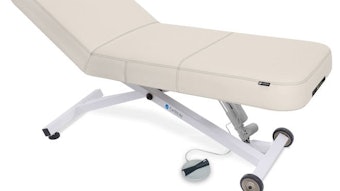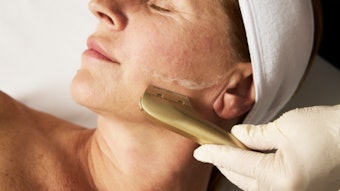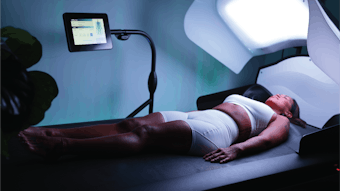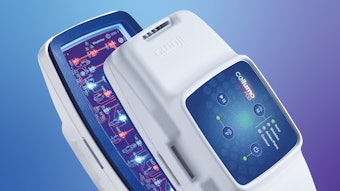
Regardless of whether you are a consumer or business owner, gone are the days of casual purchasing. Though this is not to say that society as a whole is not living and therefore not purchasing—it’s simply pointing out that people are purchasing selectively, be it when they are shopping for groceries, automobiles or skin care technology. And although this new way of thinking was a necessary realization largely catalyzed by the recent economic crisis, the new selective purchasing mind-set has quickly, and for good reason, become an irreversible way of life relevant to all people and all companies regardless of geographic location, type of business or company size.
What has not changed, however, is society’s insatiable desire for modern technological progress, whether it’s new forms of alternative energy, medical science, handheld communication devices or even skin care offerings. Consumers and society as a whole will continually pursue newer, more effective and more technologically advanced ways to improve their quality of life.
Meeting demand
In an effort to meet the demand of today’s selective purchasing lifestyle, experts suggest skin care professionals are looking for new technology that is:
- scientifically proven with sound efficacy that supports rapid and effective results;
- marketable now and maintains good longevity of marketability;
- justifiable and profitable;
- able to integrate into an existing menu of services and shows promise for future layering with other technology; and
- attainable.
Although this criteria may not be so illogical, these simple points of seemingly good common sense have an entirely new meaning in this new world of selective purchasing. As you are listening to and interpreting all information in an entirely different way, you realize society is now in “flight to quality,” which is an investment term describing what occurs when investors sell what is perceived to be higher risk investments and purchase safer options.
Justifiable profitability
Justifiable profitability sounds pretty straightforward when purchasing new technology and equipment, but the real question is, where do you start? Typically, a good starting point is to estimate the lifespan of the device so you can calculate a basic amortization of the investment asset, which is also necessary to declare when processing annual taxes for your business. And if your prospective supplier cannot answer this question definitively and immediately, its an indication this would be the time to find a new supplier.
Although technology will vary across the board, a general rule of thumb for large technology devices is a lifetime of three to five years amoritization, while handheld technology is between one to two years. This difference between the longevity of large and handheld technology is partially due to the quality of parts used; however, it is actually more relative to the wear and tear of the device itself. An example to consider could be that of a cell phone versus a television. Although they are both electronics, one will never leave its position or likely be moved while the other will be moved daily and as a result maintains a significantly higher exposure level to damage, wear and tear, loss and theft.
The numbers
A large technology with a life of five years at a cost of $5,000 would amortize to $1,000 per year, which can be calculated into your analysis.
$150 (Charge per technology service to the client)
- $5 (Cost of goods)
- $60 (Esthetician cost)
$85 (Profit per service)
Dividing that $85 profit by the amortization rate of $1,000, it comes out to 11.75, or about 12, services to pay for the cost of the device for that year.
This is a very good investment. Any large device that requires more than 30 services to pay for the debt service for one year should be eliminated from your list. In this scenario, the professional is projecting eight services per week, or 416 per year, which equates to $35,360. Calculating this during the course of five years, the investment will yield $176,800.
A small technology with a life of two years at a cost of $300 will amortize to $150 per year, which can be calculated into your analysis.
$80 (Charge per technology mini service to the client)
- $4 (Cost of goods)
- $32 (Esthetician cost)
$44 (Profit per service)
Dividing that $44 by $150, it would take 3.4 services to pay for the cost of the device for that year. In this scenario, the professional is projecting 10 mini services per week, or 520 per year, which equates to $22,880. Calculating this during the course of two years, the investment will yield $45,760.
Do note that for Internal Revenue Service (IRS) purposes, $300 is too small of a dollar amount to be considered an asset, and it would likely be categorized as a sundry or general supply, which you may realize on your tax filings. But regardless of whether your purchase is a large or small technology, if the rules of justifiable profitability are considered during your selection process, the benefit to your business can be significant. As with any investment, the larger it is, the greater potential for profit exists. However, the two previous examples also demonstrate that there are profits to be made at any level of investment.
Efficacious and scientifically proven
Everyone has been humbled in this economy, and as a result, has an entirely new appreciation for science and efficacy. This is not to say people no longer like ideas, concepts and philosophy. On the contrary, this is all part of the marketability of a product or service. The simple fact of the matter is that this is now an era where there’s no flexibility to risk not having the vital evidence of direct science that supports a new technology you are considering purchasing and implementing into your business.
There are two different kinds of technology companies: those that can supply you with real science, education and evidence that their technology performs in the way they market it; and those that claim theirs does exactly what their competitors’ equipment does. There is no shortage of copycats, and companies will go to great lengths to conjure up creative stories about their length of time in business, their history, and claims that they were the original, the inventor, the first and so on. However, it does not take a genius to pick out these companies and quickly determine that most of the information they’re trying to feed you just does not make sense.
When you are making a technology investment, make sure you are working with an organization that can show you a patent number, a letter from a university or similarly nonbiased clinical study pertaining to the specific device that proves its science, articles that have been written and published on the technology, educational seminars the company puts forth on its theory, industry peer referrals, and of course, professional referrals. Accept nothing less in your flight to quality—and as a smart investor.
Marketable longevity
To a degree, the immediate marketability of a technology device includes a mishmash of attributes ranging from the latest scientific studies to the equipment being a favorite of Hollywood’s darling of the month. However, at the end of the day, there must be some basic marketable properties for that technology to have longevity.
One such attribute already discussed is science and efficacy. Science and efficacy gives a technology, regardless of how trendy it may be, a permanently recognized place in the future of your business. Microcurrent is a good example of this, as it was first brought into the U.S. esthetic market in the early 1970s and continues to be a hot trend today. Through science and efficacy, some technologies become mainstays in the marketplace and create for themselves a fruitful future in the industry.
Integration growth
Another attribute of marketable longevity is the technology’s ability to integrate itself within the growth of your business. This means the technology must not only be excellent and proficient on its own, but it also must have the capability to be layered and utilized with other technologies and services both now and in the future. In many cases, this has more to do with the company that supplies and supports the technology than the technology itself, as ongoing education and the development of new protocols, accessories and methods of use are key in keeping things current, fresh and new.
With this in mind, partner with a company that maintains a real education department and can truly support you in this way. This support may include webinars, seminars, and e-mail and phone correspondence whenever needed with expeditious response rates, videos, protocol supplies and so on. The real point is to look closely for the infrastructure needed to supply and sustain the support you will need, along with the history of the company and references that can attest to its experience.
Asset or liability?
In tough times, investing in the future does not always seem like the most popular way forward. However, there is the distinct argument that it is actually the only real way forward. As the examples in this article have shown, there is great profit potential when you invest in the right technology. Society will always welcome applicable, efficacious technology, but it is likely to now more than ever.
Also keep in mind new technology is not always as expensive as it seems, as there are many handheld technologies made for professionals that cost as little as $300, and some of these are key to what many consider to be one of the hottest new trends in skin care—the mini service. These quick, less formal services generally take between 20–30 minutes, are performed in a reclining service chair, take place in a room-less environment usually located in the retail area of the business, and utilize the latest technology that is mobile, battery-operated, and compact so these tools can be kept with the skin care professional at all times.
Noting this, make sure that in your flight to quality, you do just that—purchase a quality asset and champion it to your clients as such. When you keep your investments in the right perspective, it allows you to maximize their potential and move forward with confidence into profits as opposed to worrying about how you are going to make your next payment. The point here is that you need to keep your sights on the glass half full.
Continuing to change
Regardless of whether you agree with and like the parameters of this new world of selective spending or not, it is now part of the fabric of a society that has been changed forever. Many businesses today have simply frozen like deer in the headlights in this economy, and as a result have made absolutely no changes to address this new culture. Those maintaining a defensive strategy and continuing to hysterically pull back on anything and everything with a cost involved—including new education, services and technology—have essentially shut down.
Technology investments are considered by the IRS to be assets, and this is exactly what they are. They are tools used to improve the results you can obtain, satisfy clients to an entirely new level, and bring profits and marketability to your business that simply did not exist before.
As time has the inherent property of moving in only one direction, the world too is magnetized by forward progress. With this movement, quality is what should be in the forefront of your mind: the quality of the technology you are considering purchasing, the quality of the education and support that will be realized with your new investment, and most importantly, the quality of the partner you are thinking of doing business with. Because in this new world, society is in a flight to quality.










